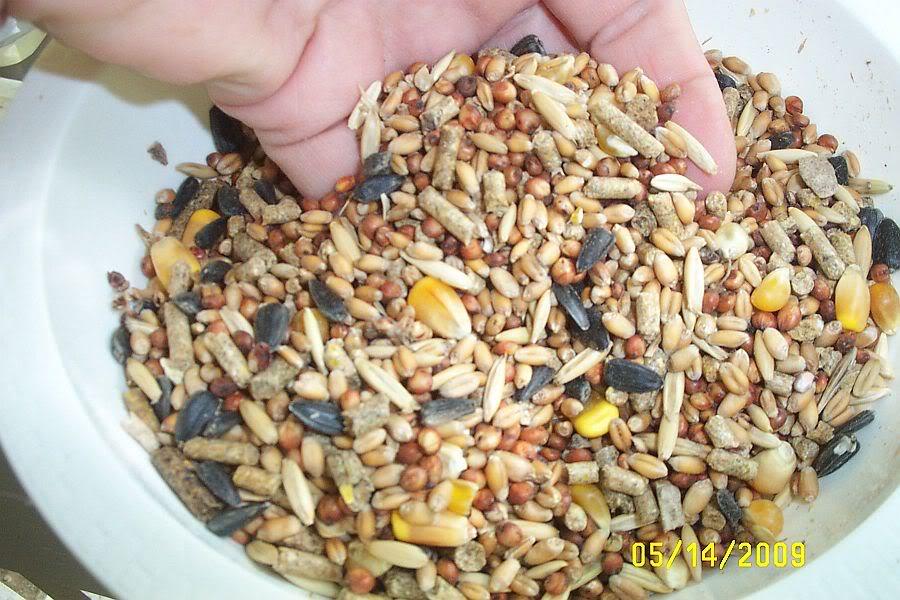Michigan State University Ag School Extension says it's a myth too, but still, it persists like a cat with nine lives.
http://www.extension.org/pages/33855/is-corn-a-hot-feed
It is not a myth. The article makes some assumptions and draws false conclusions.
The article itself states that corn is a higher calorie food. Summer calorie needs are lower than winter. I could not find any science on poultry seasonal calorie use, probably because chicken factories maintain the environment. I did find an organic chicken farmer who raises about 300 chickens in pasture mobile pens. That person mentioned as an aside (in a discussion on cost vs profit) the fact that cold increases feed consumption. Another place noted that in winter feed should never be allowed to run out to keep egg production going... Apparently not a concern in summer.
So now we have established there is a seasonal calorie difference, and corn is a higher calorie food.
We also know extra calories consumed but not used by the body immediately get stored as fat. Fat animals cannot tolerate heat as well, and will sweat more if they can sweat. (People and horses being a good example.) Why? Because fat helps insulate the body in winter and provides a store of extra energy for when food is naturally harder to find. Think bears, seals, whales, squirrels: they all put on winter fat at end of summer or keep a layer of fat for living in the cold ocean. Wild land mamels tend to burn off fat through the winter, and enter spring lean and hungry.
So can we agree fat accumulation is an evolved mechanism for survival especially through cold. (a small percentage of fat is required for normal function as evidenced by women atheletes who have too low a measure of body fat to have normal menstrual cycles).
Livestock producers use corn as a finisher to add a layer of fat. Fat is not good for chickens as it causes more health problems than just heat intolerance. Prolapse and major organ damage are common to fat chickens.
So we can see chickens are not intended to be fat, and the fat is added to meat birds and other animals in the last weeks of life for marketing and higher weight at sale.
The article is written from the perspective that assumes a change in feed (sweet feed to oats for horses) rather than maintaining a consistent feed throughout the year as is the case with manufactured poultry feeds.
Purina (for all their poultry feeds ) only tells nutrional values, not ingredients by percentage. An austrailian government site stated starter and grower feeds were 1/2 corn, but it might or might not be true for US/Canadian poultry feed. As long as manufacturers meet the nutrition that is listed, they can use whatever mixture is cheapest.
So we can say that corn is very likely a major part of manufactured feeds, and then we are talking about adding more corn in scratch.
Since pellets and crumbles are manufactured, you can only cut calories by reducing total feed, but you can only cut so much before you start cutting nutrition. Thus you have change out high calorie foods for lower calorie foods to maintain nutrient and protein needs while cutting calories. If you do not want to change feed entirely, the place to cut it is in the scratch because this will not harm nutrtional balance.
The article talks about myth of a hot feed in a very specific way. It was a very subtle manipulation, in fact. It presented a single factor, not all factors: it presents the "heat" as body heat generated by oat fiber while completely ignoring the effect of fattening from high starch/sugar diet while maintaining nutritional requirements. That generated heat can be minimized by when you feed: morning and late afternoon are typically cooler than midday. Fat makes the body less able to handle the higher midday heat.
Horse people do tend to measure by scoops, but they also know calories need to be cut when winter is over without cutting nutrition, which is why they switch to oats. Farmers and horse people typically present grain feeds in morning and/or evening and allow grazing or hay the rest of the day. They are not as simple minded as the article insinuates and they do adjust feed as they monitor their animals weight.
People have been watching their animals since before recorded history and passing down those observations: wisdom. As science advanced wisdom was labeled myths or old wives tales and discounted, but consider the multitude of times science ends up supporting the validity of old practices, like bad plants, good plants, and medicinal plants. In fact, part of they way pharma finds new drugs now is by using tribal knowledge in South America.
The corn lobby is also trying to say there is no difference in sugars: sugar is sugar. This is just flat out untrue. Sugars are molecularly different and those molecules are handled differently by the body...some pass through and some are very easily utilized or converted to fat. So I am not at all surprised to see a pro corn article again trying to discount what is true and understood by those who have spent years raising animals (even if they do not know what makes it true).
It has unfortunately become necessary to be a very discerning reader, and to look at more information than what is offered in a single article. Bias in science is real, and getting ahead in ones field can depend on having the correct biases. It is also becoming more pervasive as big money controls more of the research and published research through government connections, schools, grants, and publications.



